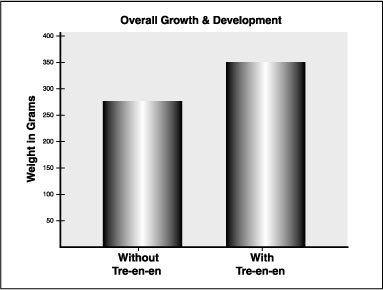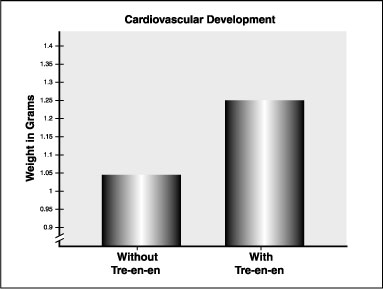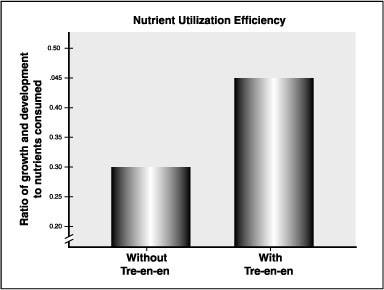Tre-en-en Supplies What Food Processing Strips from Dietary Staples
To increase their shelf life, grains are subjected to about two dozen processes before they are transformed into dietary staples, such as white flour and white rice. Processing removes the nutritious outer layers of the grain. These layers contain the majority of grain’s vitamins and minerals, as well as “good fats” called lipids and sterols. Other foods, notably soybeans, provide healthful lipids and sterols as well.
In the 1950s, a series of studies conducted at a Southern California hospital indicated that people suffering from chronic fatigue could benefit dramatically from a mixture of plant extracts providing broad-spectrum lipids and sterols. Now, four decades later, that mixture - GNLD’s Tre-En-En - is still helping people worldwide. It forms the base into which vitamins and related food factors, minerals, enzymes and protein have been added to create GNLD’s multifactor food supplement, Formula IV.
The world’s first phytonutrient supplement, Tre-En-En provides plant lipids and sterols which food processing has stripped from the staple foods that form the foundation of our daily diets. Named from the Greek “3-in-1,” Tre-En-En is a unique combination of concentrated extracts from whole wheat berry, rice bran and soybeans. More than just wheat germ or soy oil, it contains everything naturally available from the lipid portion of the plants.
Lipids and Sterols: Building Blocks for Every Cell Membrane in the Human Body
When it comes to health, not all fats are bad. Some fats are good - even essential. Fats provide energy, essential fatty acids and cellular building blocks and they have regulatory functions. For instance, fats are necessary for normal growth and development, especially for infants. They are also important to the structure and function of the nervous system. But most importantly, they make up the greater part of the membranes that surround every cell in the human body.
Healthful lipids and sterols from wheat, rice and soybeans are “good fats.” Certain lipids, including omega-6 and omega-3 fatty acids, may increase the fluidity, or “pliability,” of cell membranes and help keep cells functioning normally. Plant sterols may have a number of beneficial effects and may support the proper functioning of the cardiovascular system. Both lipids and sterols are located in the bran and outer layers which are removed during grain processing (see The Story of Wheat, The Story of Rice, and The Story of Soy).
Consequences of the Imbalance of “Good” and “Bad” Fats in the Modern Diet
With consumer preferences shifting to low-fat and fat-free foods, people are eating less fat than in recent years, although the fat content of the Western diet is still far from the 30% recommended by health experts. While reducing the fat content of the diet has many positive health consequences, it means that people are reducing the total lipids and sterols they are taking in from all sources, not just “bad” fats such as saturated fats. They are also reducing their intake of “good” fats from whole grains and soybeans, which supply important lipid and sterol nutrients you need to feel your best.
In the quest to reduce the fat content of the diet, fat substitutes or “fake fats” have begun to make their way into the marketplace. While these substances may make some foods less fatty and lower in kilojoules, they do nothing to meet the body’s hunger for good nutrition. Whole-food lipids and sterols from wheat, rice and soy will be especially important for the growing group of people who use fat substitutes to reduce the fat content of their diets.
The decrease in total fat consumption is only part of the reason the modern diet features an imbalance of “good” and “bad” fats. The other part of the story is that the foods that make up the human diet have changed dramatically in the last 50 years. As artificial fats have increasingly displaced natural fats in the foods we eat, the lipid and sterol profile of the diet has changed. While our hunter/gatherer ancestors consumed a diversity of natural fats, mostly from locally gleaned plants, this diversity decreased when people became successful at growing agricultural crops which could be sold at the local farmers’ market. This eroding nutrient diversity was compounded by a decrease in nutrient density when people discovered that grains could be stored longer without going rancid if their lipid-and sterol-rich outer coatings were removed. And after World War II, the world got its first taste of margarine and other artificially hydrogenated oils and the global kitchen has never been the same. This relatively rapid displacement of natural fats with artificial fats in all types of foods has created an unhealthy imbalance of “good” versus “bad” fats and has diminished the amount and variety of healthful lipids and sterols in the diet.
Imbalance has consequences: Insufficiency of lipids and sterols may cause alterations of the cell membrane, leading to reduced cellular efficiency throughout the body. It may also affect the ability of the cell’s “metabolic machinery” to produce energy. Lipid/sterol insufficiency may also slow the normal workings of the endocrine glands , which virtually control the body’s energy levels. For these reasons, insufficiency of lipids and sterols may be a factor in long-term fatigue.
Tre-en-en for Cellular Efficiency
Our bodies are composed of trillions of cells which must work efficiently if we are to stay healthy. How do cells stay healthy? The key is their membranes. Like bodies, cells must take in nutrients and eliminate waste. Every cell in the body is surrounded by a lipid membrane with the discretionary power to allow only needed nutrients to enter the cell. By the same token, it allows only waste material and metabolic products (hormones, enzymes, neurotransmitters, etc.) to exit. Deficiencies of lipids, sterols and amino acids can compromise the discretionary power of cells. Cells can become “starved” (inhibited in their ability to take in substances) even though nutrients are available. And they can become “constipated” (inhibited in their ability to eliminate accumulating waste products or export metabolites). Under these conditions, cells work inefficiently, expending more energy than healthy cells would to get the same results.
Tre-En-En Grain Concentrates supply essential lipids and sterols to promote the efficient functioning of cells, glandular systems and the entire body. Remember, we are only as healthy as our cells, and Tre-En-En strengthens the lipid/sterol “link” in our “Chain of Life,” supporting cellular health and vitality.
Proven Effective in Laboratory Tests
Scientists have known for years that lipids and sterols are required for normal cellular functioning, glandular activity, and overall growth and development. A series of studies conducted at Texas A&M University in 1987 confirmed the nutritional benefits of Tre-En-En Grain Concentrates (lipids and sterols from wheat, rice and soybeans). The seven-week studies looked at growth, development, maturation and glandular activity of young rats fed either a standard control diet (laboratory feed fortified with vitamins and minerals) or the standard diet with Tre-En-En Grain Concentrates substituted for the lipids used in the standard feed. Animals were allowed to eat as much as they wanted; both feeds had the same kilojoule content. (All tests were performed and all animals were housed and cared for with the highest level of concern for the health and well being of the animals. No animals were exposed to conditions of pain or suffering.)
When the amount of food consumed was correlated with the amount of weight the rats gained, the researchers found that the Tre-En-En-fed animals displayed superior growth and development, indicating that their bodies made better use of the available nutrients. In all cases the Tre-En-En-fed group grew faster, achieved maturity faster and had better overall development than the group that was fed the control diet. In addition, the cardiovascular systems of the Tre-En-En-fed group were better developed, and their adrenal activity - an indicator of their energy levels and ability to respond to stress - was greater.

Overall Growth and Development
Animals fed diets fortified with Tre-En-En Grain Concentrates attained a greater level of overall growth and development than did animals fed a control diet.

Cardiovascular Development
Animals on the Tre-En-En diet displayed greater cardiovascular development than did animals fed the control diet. Cardiovascular development (measured by heart weight) paralleled overall growth and development, indicating that larger animals were not “fatter” but instead were more fully developed.

Nutrient Utilization Efficiency
Compared to animals on a control diet, the animals fed Tre-En-En Grain Concentrates demonstrated superior growth, development and maturation, even though each test group consumed the same amount of kilojoules. This result indicates that the Tre-En-En-fed animals utilized nutrients from food more efficiently than did control animals.

Glandular Activity
Glandular activity (as measured by liver glycogen levels) was almost twice as high in the Tre-En-En-fed rats compared to the control animals. This result indicates that the Tre-En-En-fed animals had higher energy levels and were better prepared to handle stress.
Unique and exclusively available from GNLD, Tre-En-En provides lipids and sterols cells need to be their healthy best! With cold-pressed, cold-processed extracts and concentrates from wheat germ, rice bran and soybeans, Tre-En-En helps assure good nutrition at the cellular level.
